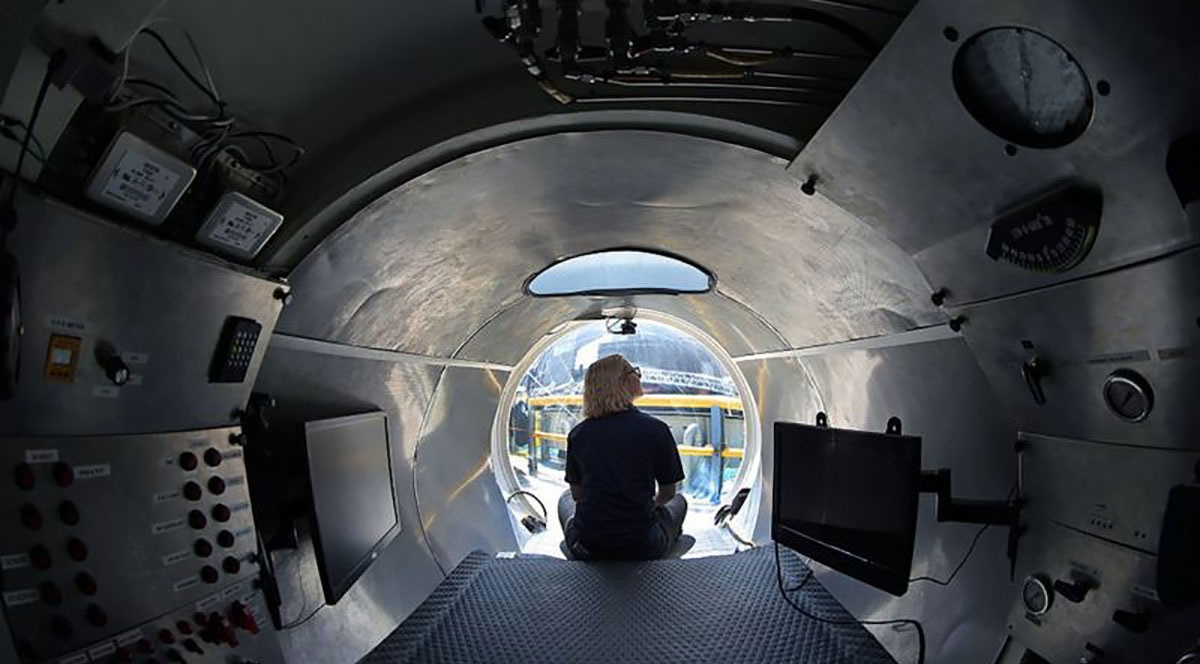Why it is so difficult to find the missing Titan submersible in the ocean
Rescue teams face many difficulties that make the task of recovering the lost commercial submersible off the coast of Canada a daunting task.

Finding a tiny submersible in the vast, icy ocean surrounding the remote Canadian coast of Newfoundland, Canada is a daunting task.
If, in addition, the oxygen available to the crew is close to running out, the rescue teams cannot work more than against the clock.
The operation to locate the missing commercial submarine with 5 people who were going to visiting the remains of the Titanic is especially challenging, despite the fact that in the last hours “sounds of blows” in the search area have restored hope of finding them alive.
It is estimated that the five people on board had about 40 air hours left to breathe.
The submersible has tanks capable of supplying its five occupants with oxygen for up to 96 hours, but 3 days have passed since it was lost.
The crew of the Titan ship, belonging to the company Ocean Gate, lost contact with the base 1 hour and 45 minutes after submerging in the sea, according to the United States Coast Guard.
Alistair Greig, professor of marine engineering at University College London, explains why the search is so difficult.
“Communication to Through the water is always very difficult. Once communication has been lost, it is very difficult to locate where it is. One of the big problems with the operation is that they don't know whether to look at the surface of the Atlantic or at the bottom of the sea. It could be in either place”.
To the expert, it is unlikely that Ocean Gate's experimental submarine is in the middle. He thinks he's either floating or completely sunk.
Unpredictable movement
Jamie Pringle, a researcher at Keele University, points out that another difficulty is that the ship may be moving unpredictably right now.
The submersible disappeared into the ocean approximately 1,500 kilometers away. Cape Cod, Massachusetts, where the depth is approximately 4,000 meters.
“If it is on the surface of the ocean, it will be very difficult to detect because, as It is a submersible, it is designed to have neutral buoyancy. That is, most of the ship floats underwater with only a small amount of surface area visible”, says Greig.
The submersible, made of carbon fiber and titanium, is the size of a large van,
“Trying to find something like this from the air, particularly if they've run out of power and can't send signals, will be a real challenge,” he adds.
Trapped inside
A further complication is that the crew cannot get out on their own.
The ship cannot be opened from the inside; it can only be opened by specialized equipment from the outside.
That is why, in the hypothetical case that the ship been able to rise to the surface, the passengers would not be able to get out of it without outside help.
“If it is at the bottom of the sea, it will not be so much a question of looking for them, but of listening to them because what they used to locate them is sonar and hopefully the crew will make some noise in the hull, which can be detected”, says the marine engineering professor.
Jonathan Amos, BBC Science correspondent, explains how rescue teams are using sound
Sound is the way people communicate in the ocean. Whales and porpoises use it, as do humans.
All forms of electromagnetic radiation, such as radio or radar, are pretty useless underwater.
But sound travels efficiently, traveling fast (1,500 m/s) and over long distances.
That's why the rescue operation has been dropping sonobuoys into the water, listening for any unusual sounds.
If the hits detected every 30 minutes come from the ship and are real, authorities can use them to locate the sub.
If they are transmitted as a regular pattern, you can time the arrival of that pattern at different sonobuoys to get where the source is coming from.
The GPS receiver does something similar on your phone, using radio signals transmitted from different satellites.
Sound focusing isn't that precise, but it would help greatly in reducing the efforts of the remotely operated drone.
This news has been tken from authentic news syndicates and agencies and only the wordings has been changed keeping the menaing intact. We have not done personal research yet and do not guarantee the complete genuinity and request you to verify from other sources too.

